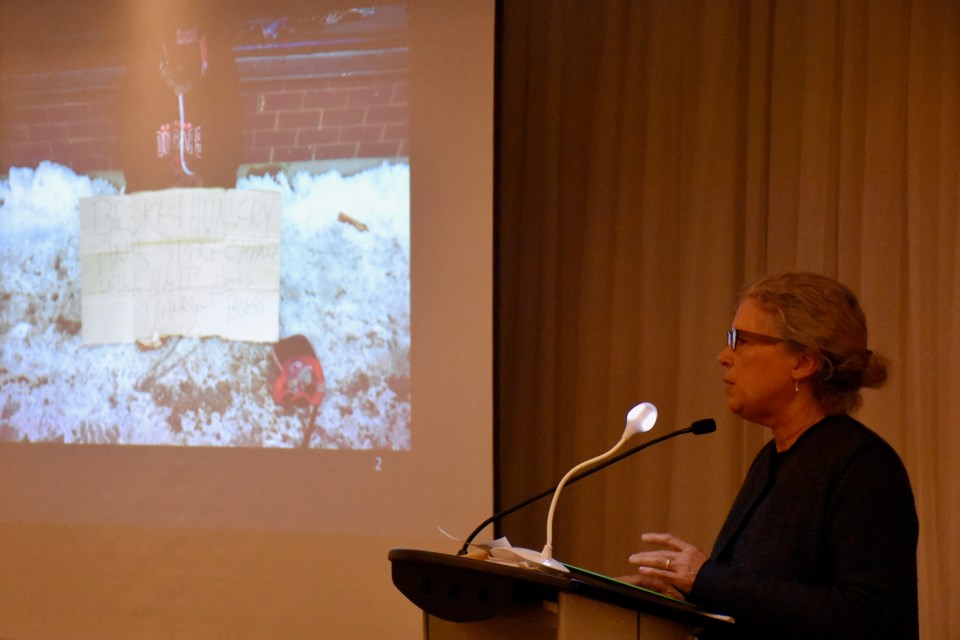A new study is giving a better idea of how serious the issue of homelessness is in the region.
The enumeration completed this past spring was done for the entire Cochrane district and breaks down the numbers by city.
While the final report, including a breakdown of the communities studied, won’t be ready until next month, Laurentian University Prof. Carol Kauppi presented the preliminary numbers at today’s World Homeless Day events in Timmins.
Across the district, it shows there are 1,782 homeless people. By location, Timmins has the highest number with 733 homeless people. Moosonee is next at 426, Cochrane’s at 365, Hearst is 117, Kapuskasing at 99, and Iroquois Falls and Matheson are at 42.
“The general finding is that the single biggest category of people living with homelessness are living with hidden homelessness and this is common pattern in our northern towns and cities. It’s not easy to do a study and get those people to come out, so we always know that the number we come up with is going to be a conservative estimate, there are more people living with homelessness,” Kauppi said. “Still when we compare this number with other places in Canada, we find it’s a high rate of homelessness.”
The most common form of hidden homeless, she explained, is couch surfing. She said it’s hard to find those people, but it’s important to include them in the data.
“They suffer from some of the most serious impacts of homelessness, their diet is inadequate, they’re very stressed, very often they have mental health and physical health challenges. And as I presented here today, addictions are a big part,” Kauppi said.
World Homeless Day helps shine the light on homelessness, celebrates the local successes and got people together to talk about solutions.
KayLee Morissette is the outgoing executive director and regional coordinator of the Cochrane District Social Planning Council, and also co-founded the Homeless Coalition of Timmins (HCT).
She said isn’t shocked at the numbers presented today, noting there is a slight increase from the last study from 2011.
“I am shocked and disappointed at the high proportion of Indigenous individuals experiencing homelessness in our community, but that just goes to show that we need more community collaboration on solutions. We need to engage more voices as well,” Morissette said.
The enumeration data was collected over a seven-day period in May and June.
Because the numbers don’t include every voice, she said the actual number could be closer to 1,000.
She doesn’t think people understand what homelessness is.
“Because they’re not seeing 700 people sleeping outside in alleyways in downtown they don’t acknowledge that homelessness is an issue here,” said Morissette. “I think what we’re seeing is an increase in some panhandling activity downtown that might be between five and eight individuals that people are seeing, so they might acknowledge that there is a dozen homeless people, but not the number that we actually know exist.”
Having enumeration numbers will help with grant applications, according to HCT chair and co-founder Jason Sereda.
“Any sort of funding that we try to bring to our community, they want hard data on what we’re trying to change. Without the enumeration study, we’re not going to be able to move forward,” he said.
He said that nothing in the preliminary report was shocking.
Other findings in the report for Timmins are that 54 per cent of those surveyed were men, with 43 per cent being women, and three per cent LGBTQ. Sixty-eight per cent are Indigenous.
